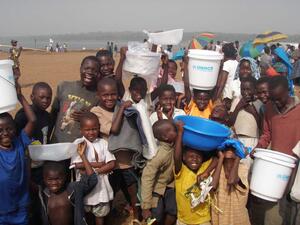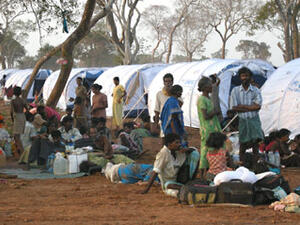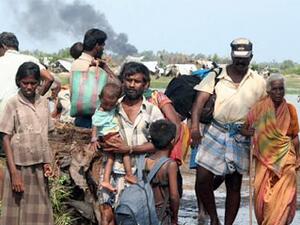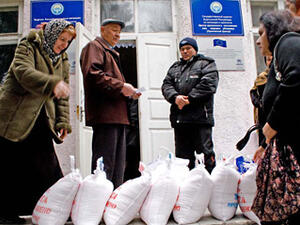Nearly 20,000 refugees flee eastern Congo for Uganda
Nearly 20,000 refugees flee eastern Congo for Uganda
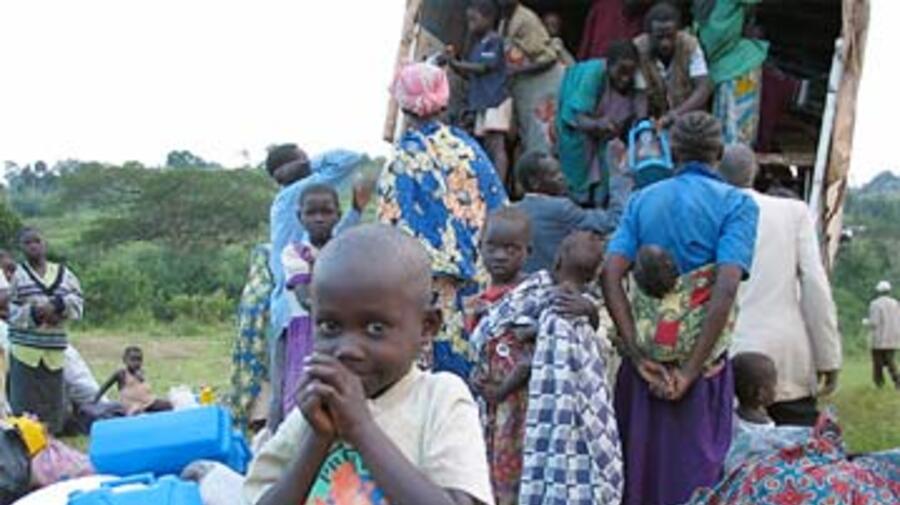
The newest Congolese refugees in Uganda, like these who arrived in 2003, will mostly be moved to Kyaka II camp.
More than 10,000 refugees arrived in Ishaka, about one kilometre inside the border with Western Uganda. Crossing Lake Albert in creaky boats, another group, estimated at 5,000 to 7,000, arrived by boat in the village of Nkondo, some 285 kilometres from Kampala in western Uganda.
The number who have arrived in five different areas of Uganda totals between 16,300 and 19,300 people, UNHCR officials at the scene said.
"The majority are women and children, many in poor health and in immediate need of assistance," UNHCR spokesman Ron Redmond told journalists in Geneva Friday. Speaking of the group in Nkondo, he said: "They are stuck at the bottom of a sharp escarpment on the shores of the lake, accessible only by small trucks down a very precarious road. Most of the refugees are not strong enough for the three-hour walk up the escarpment."
The refugee agency has dispatched emergency relief items, including blankets, jerry cans, kitchen sets, soap and plastic rolls from its warehouse in Kampala to Nkondo, where it is setting up a temporary transit centre.
"We have contacted other UN agencies to help provide food and sanitation, and are negotiating with the local authorities to set up a water tank at the centre," Redmond said. "At the moment, refugees are drinking water from the lake, at great risk to their health."
The refugees in Nkondo, who come from the north-eastern Ituri district, say they are fleeing fighting between two ethnic groups, the Hema and the Lendu, who have a history of conflicts going back to colonial times.
Local Ugandan authorities, long accustomed to such influxes, usually welcome the refugees, but prefer for them to move inland if they are going to stay for a long time, to avoid over-burdening the fishing villages along the lake.
In addition, international law calls for refugee camps to be located at least 50 km from an international border. Unlike other countries that require refugees to stay in camps, Uganda sets aside settlements where refugees can farm for themselves and receive aid and services from UNHCR.
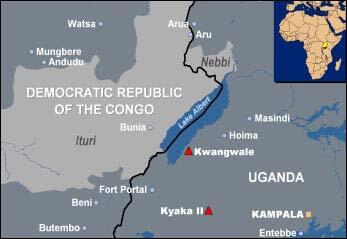
The recent arrivals may be transferred to Kyaka II, a fertile farming settlement for Congolese refugees in western Uganda that was set up for another wave of refugees who arrived in May, 2003, during the last Hema-Lendu flare-up in Ituri. At that time, an estimated 20,000 Congolese fled from Ituri district to Uganda.
"We plan to transfer some 600 people to Kyaka II on Saturday," Redmond said. "The move presents great logistical problems; roads and infrastructure in the area are poor, and the trip from the border takes at least six hours. We are also very worried about the water situation, both in the border area and in Kyaka, where there is barely enough water now for the current population."
Uganda is home to some 200,000 refugees. Before this most recent influx, just under 10,000 of them were from the Democratic Republic of the Congo, and most of the others from Sudan.


